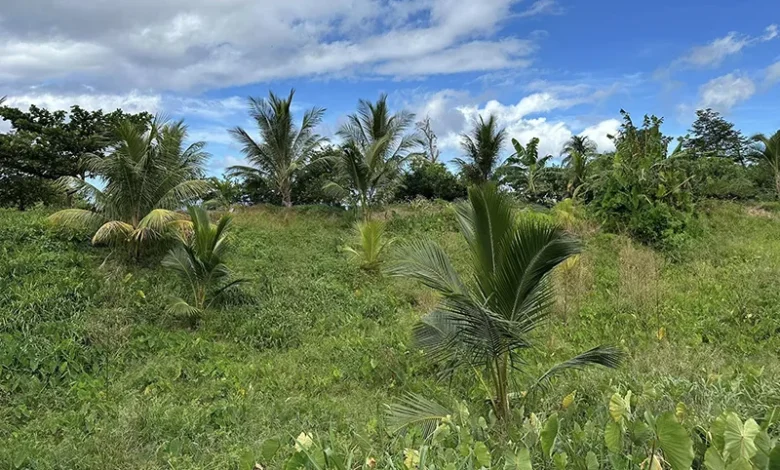Dominica Wildlife

Dominica Wildlife is incredibly diverse, thriving across lush rainforests, volcanic landscapes, and vibrant marine environments. Known as the “Nature Isle of the Caribbean”, Dominica hosts a rich array of endemic species unique to the region. This biodiversity highlights Dominica’s dedication to preserving its natural heritage, attracting eco-tourism stakeholders and enthusiasts eager to explore the island’s pristine ecosystems and distinctive wildlife.
Avian Diversity in Dominica
Dominica’s birdlife is both abundant and unique, featuring over 190 species. Among the most iconic are two endemic parrot species: the Sisserou Parrot and the Jaco Parrot. Known as the Imperial Amazon, the Sisserou Parrot (Amazona imperialis) is the national bird, a symbol of pride for Dominica people and is featured on the national flag. This vibrant bird is found primarily in mountainous rainforest regions and has a striking mix of purple and green feathers. The Jaco Parrot, or Red-necked Amazon (Amazona arausiaca), is slightly smaller and is commonly found in the island’s mid-elevation forests.
In addition to the parrots, other notable bird species enrich Dominica’s skies. The Foufou Madè, a hummingbird with iridescent colours, is a frequent visitor to the island’s flowering plants. The Rufous-throated Solitaire, known locally as the Siffleur Montagne, is celebrated for its melodious calls that echo through the higher-altitude forests. Dominica’s protected areas, such as the Morne Trois Pitons National Park, serve as sanctuaries for these species, providing essential habitat to sustain their populations.
Terrestrial Fauna: Mammals, Reptiles, and Amphibians
While Dominica’s terrestrial mammal population is relatively limited, it includes several notable species. The Agouti, a rodent that resembles a large guinea pig, can often be spotted darting through the underbrush. The Manicou – Opossum, is another indigenous species. Dominica also hosts ten species of bats, which play essential roles in pollination and insect control, contributing significantly to the island’s ecological balance.
Dominica’s reptilian inhabitants include four species of snakes, such as the non-venomous Boa Constrictor, which plays a key role in maintaining the island’s ecosystem by controlling small animal populations. The island is also home to eleven species of lizards, including the Dominican Anole and Skinks that are specially adapted to their forest and coastal habitats.
One of Dominica’s most remarkable amphibians is the Mountain Chicken (Leptodactylus fallax), a large frog rather than a chicken. Once abundant on the island, the Mountain Chicken population has dramatically declined due to factors like disease and overhunting. Conservation efforts are underway to protect this critically endangered species, recognized as one of Dominica’s national treasures.
Marine Life: Whales, Dolphins, and Coral Reefs
The waters surrounding Dominica are teeming with marine biodiversity, making the island an attractive location for divers and marine biologists. Dominica is particularly known for its resident population of Sperm Whales (Physeter macrocephalus), making it one of the few places worldwide where these majestic creatures can be observed year-round. Other cetaceans, such as the Spinner Dolphin and the Bottlenose Dolphin, are frequently spotted along the coastline, adding to Dominica’s allure as a prime location for whale and dolphin watching.
Dominica’s coral reefs support over 320 fish species, contributing to the vibrant underwater landscape. Notable dive sites, including Champagne Reef and the Soufrière Scotts Head Marine Reserve, showcase volcanic bubbles and thriving coral systems, providing visitors with immersive snorkelling and scuba diving experiences. These marine reserves protect Dominica’s coral ecosystems from overfishing and environmental degradation, ensuring the island’s marine biodiversity remains intact.
Conservation Efforts and Sustainable Tourism
Dominica has made significant conservation strides driven by governmental initiatives and community involvement. Approximately 60% of the island remains under natural forest cover, and Dominica has established several protected areas to safeguard its unique flora and fauna. The Forestry, Wildlife and Parks Division oversees the management of national parks, marine reserves, and wildlife sanctuaries, actively working to balance conservation efforts with sustainable tourism.
The Morne Trois Pitons National Park, a UNESCO World Heritage Site, is a cornerstone of Dominica’s conservation efforts. Spanning over 17,000 acres, it protects not only the Boiling Lake and Valley of Desolation but also the delicate habitats of the island’s endemic wildlife. The Soufrière Scotts Head Marine Reserve is another significant conservation area dedicated to preserving marine life and coral reefs, which are critical to biodiversity and local livelihoods.
Dominica has also engaged in public awareness campaigns to promote conservation values among locals and visitors. Programs to educate the public about the island’s unique ecosystems and the importance of sustainable practices are integral to Dominica’s long-term environmental strategy. Community-led initiatives, such as eco-tourism projects in the Kalinago Territory and locally managed wildlife tours, provide economic opportunities that align with the island’s conservation goals.
Cultural Significance and Community Involvement
The natural heritage of Dominica is intricately tied to the cultural identity of its people, particularly the indigenous people, the Kalinago community. Traditional practices among the Kalinago reflect a deep respect for the land and its resources, and they continue to play an essential role in maintaining the island’s biodiversity. Cultural sites like the Kalinago Barana Autê allow visitors to experience the connection between Dominica’s natural landscapes and its indigenous heritage.
Additionally, the island’s descendants of enslaved Africans have a profound connection to the land, embodied in the Creole language and cultural expressions that resonate across the island. Community-based conservation efforts and sustainable practices in places like Jungle Bay resort reflect this cultural continuity, preserving the island’s natural resources for future generations.
Future Prospects for Wildlife Conservation
Dominica continues to invest in infrastructure that supports eco-tourism while preserving its natural environment. The construction of a new international airport aims to increase accessibility for global travelers, promoting eco-tourism and attracting nature-oriented visitors. Additionally, future policies and projects seek to strengthen Dominica’s resilience to climate change, emphasizing its commitment to preserving its unique ecosystems.
Environmental education remains a priority, with local schools and community programs focusing on sustainable practices and wildlife conservation. By fostering a culture of environmental responsibility, Dominica aims to ensure that its natural and cultural heritage continues flourishing, making it a leading example of eco-tourism and conservation in the Caribbean.




